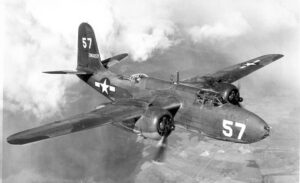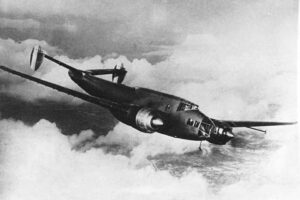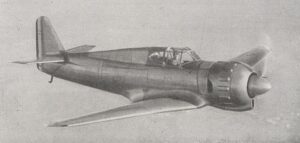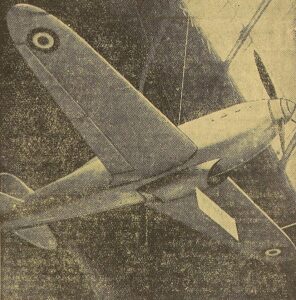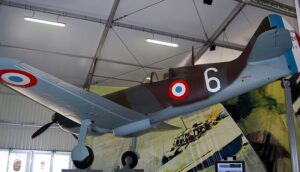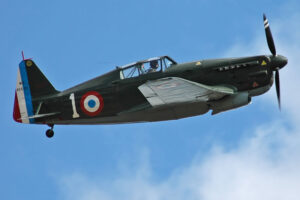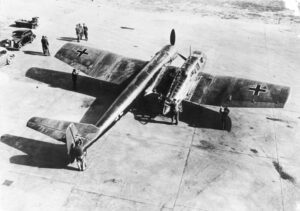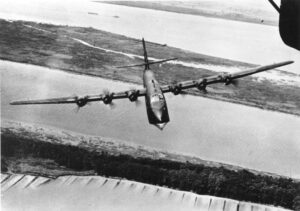Time Period: World War II
Country of Origin: Germany
Type: Reconnaissance and Surveillance
Manufacturer: Henschel & Son
Henschel Hs 126 Aircraft Overview
The Henschel Hs 126 was a German reconnaissance and observation aircraft used during World War II. Developed by Henschel & Son, it was designed to replace the older Heinkel He 46 and He 50 biplane reconnaissance aircraft in service with the Luftwaffe.
The Hs 126 was a rugged and versatile aircraft, featuring a high-wing monoplane design with a fixed landing gear. Its robust construction allowed it to operate from unimproved airstrips and rough terrain, making it well-suited for reconnaissance missions in frontline areas and harsh environments.
Powered by a single BMW 132 radial engine, the Hs 126 had a top speed of around 320 km/h (200 mph) and a range of approximately 900 km (560 miles). It was crewed by a pilot and an observer/navigator, who operated the aircraft’s reconnaissance equipment and cameras.
The aircraft was armed with defensive armament, typically consisting of one or two machine guns mounted in the fuselage and rear cockpit positions. This provided some protection against enemy fighters during reconnaissance missions.
The Hs 126 saw extensive service on the Eastern Front, where it conducted reconnaissance missions to gather intelligence on enemy troop movements, positions, and fortifications. It also served in other theaters of operation, including North Africa and the Mediterranean, where it performed similar roles.
In addition to reconnaissance, the Hs 126 was used for liaison duties, aerial photography, and light ground attack. Its versatility made it a valuable asset to the Luftwaffe, providing commanders with crucial information for planning and executing military operations.
Henschel Hs 126 B-1 Specifications
- Crew: Two (pilot and observer/gunner)
- Length: 10.9 m (35 ft 7 in)
- Wingspan: 14.5 m (47 ft 7 in)
- Height: 3.8 m (12 ft 4 in)
- Wing area: 31.6 m2 (340 ft2)
- Empty weight: 2,030 kg (4,480 lb)
- Loaded weight: 3,090 kg (6,820 lb)
- Powerplant: 1× Bramo 323 9-cylinder radial engine, 625 kW (838 hp) (850 PS)
Henschel Hs 126 B-1 Performance
- Maximum speed: 356 km/h at 3,000 m (221 mph at 9,850 ft)
- Range: 998 km (620 mi)
- Service ceiling: 8,530 m (28,000 ft)
- Rate of climb: 550 m/min (1,800 ft/min)
- Wing loading: 97.8 kg/m2 (20.1 lb/ft2)
- Power/mass: 0.21 kW/kg (0.13 hp/lb)
Henschel Hs 126 B-1 Armament
- 1 × forward-firing 7.92 mm (.312 in) MG 17 machine gun
- 1 × flexible 7.92 mm (.312 in) MG 15 machine gun in the observer/gunner
- Up to 150 kg (330 lb) of bombs
Henschel Hs 126 Image Gallery
More Luftwaffe Aircraft
The Luftwaffe, the German air force during World War II, fielded a diverse range of aircraft that played critical roles in the conflict. These aircraft encompassed fighters, bombers, reconnaissance planes, transport aircraft, and more. Explore others:
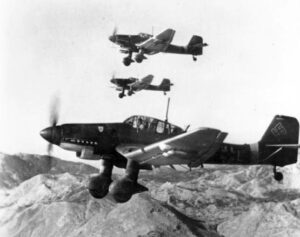
Junkers Ju 87 Stuka
The Junkers Ju 87 was a German Luftwaffe dive bomber and ground-attack aircraft first flown in 1935 and used during World War II.
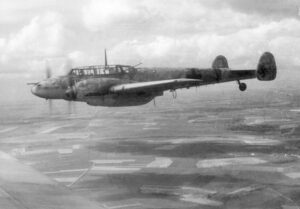
Messerschmitt Bf 110
The Messerschmitt Bf 110 was a German twin-engine destroyer fighter-bomber developed in Nazi Germany in the 1930s and used in WW2.
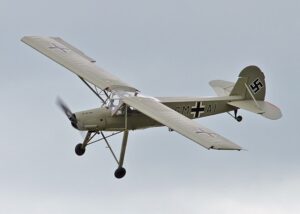
Fieseler Fi 156 “Storch”
The Fieseler Fi 156 “Storch” was a German reconnaissance & communications aircraft built by Fieseler before and during World War II.
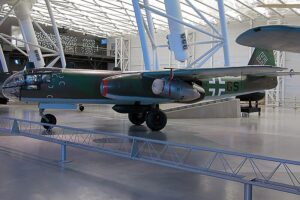
Arado Ar 234 Blitz
The Arado Ar 234 was a German jet-powered bomber produced by Arado Flugzeugwerke and used during the last years of WW2.
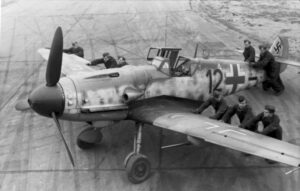
Messerschmitt Bf 109
The Messerschmitt Bf 109 is a German fighter aircraft and the backbone of the Luftwaffe’s force during World War II.



